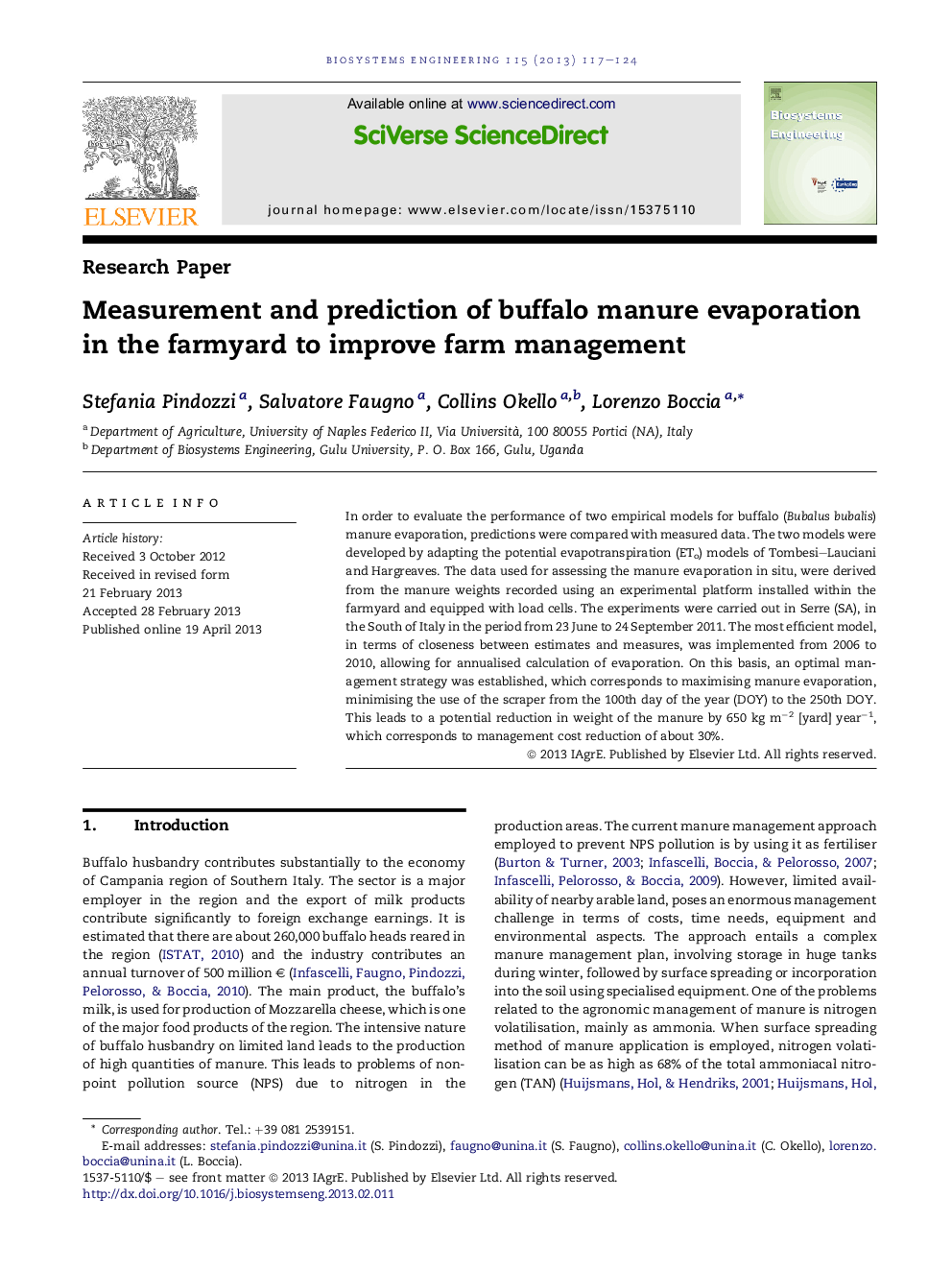| Article ID | Journal | Published Year | Pages | File Type |
|---|---|---|---|---|
| 1711385 | Biosystems Engineering | 2013 | 8 Pages |
In order to evaluate the performance of two empirical models for buffalo (Bubalus bubalis) manure evaporation, predictions were compared with measured data. The two models were developed by adapting the potential evapotranspiration (ETo) models of Tombesi–Lauciani and Hargreaves. The data used for assessing the manure evaporation in situ, were derived from the manure weights recorded using an experimental platform installed within the farmyard and equipped with load cells. The experiments were carried out in Serre (SA), in the South of Italy in the period from 23 June to 24 September 2011. The most efficient model, in terms of closeness between estimates and measures, was implemented from 2006 to 2010, allowing for annualised calculation of evaporation. On this basis, an optimal management strategy was established, which corresponds to maximising manure evaporation, minimising the use of the scraper from the 100th day of the year (DOY) to the 250th DOY. This leads to a potential reduction in weight of the manure by 650 kg m−2 [yard] year−1, which corresponds to management cost reduction of about 30%.
► An experimental platform was installed in the paddock to assess buffalo manure weight. ► Measured data were used to compare two empirical models for manure evaporation. ► The more efficient model was implemented over a period of 5 years. ► An optimal management strategy was established minimizing the use of the scraper. ► Potential reduction in manure weight corresponds to cost reduction of about 30%.
